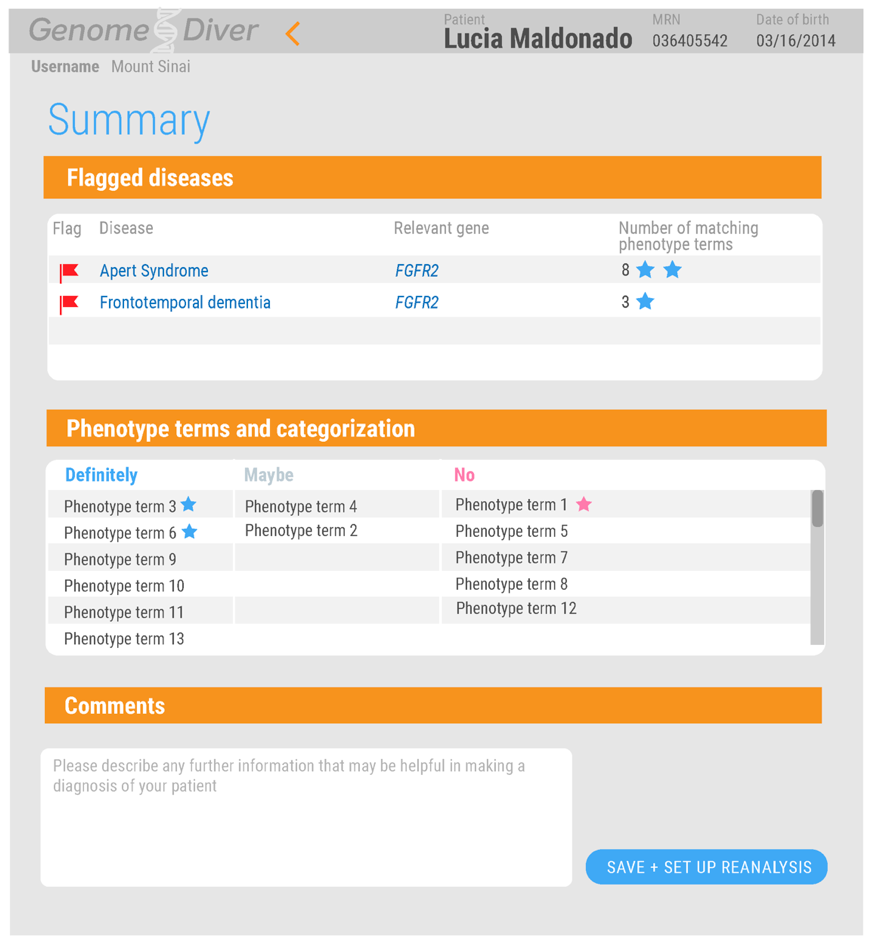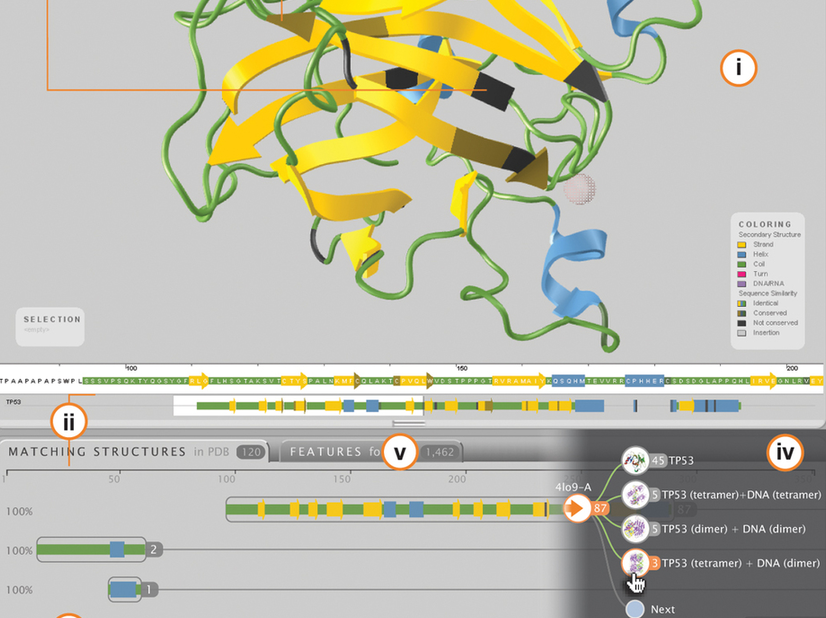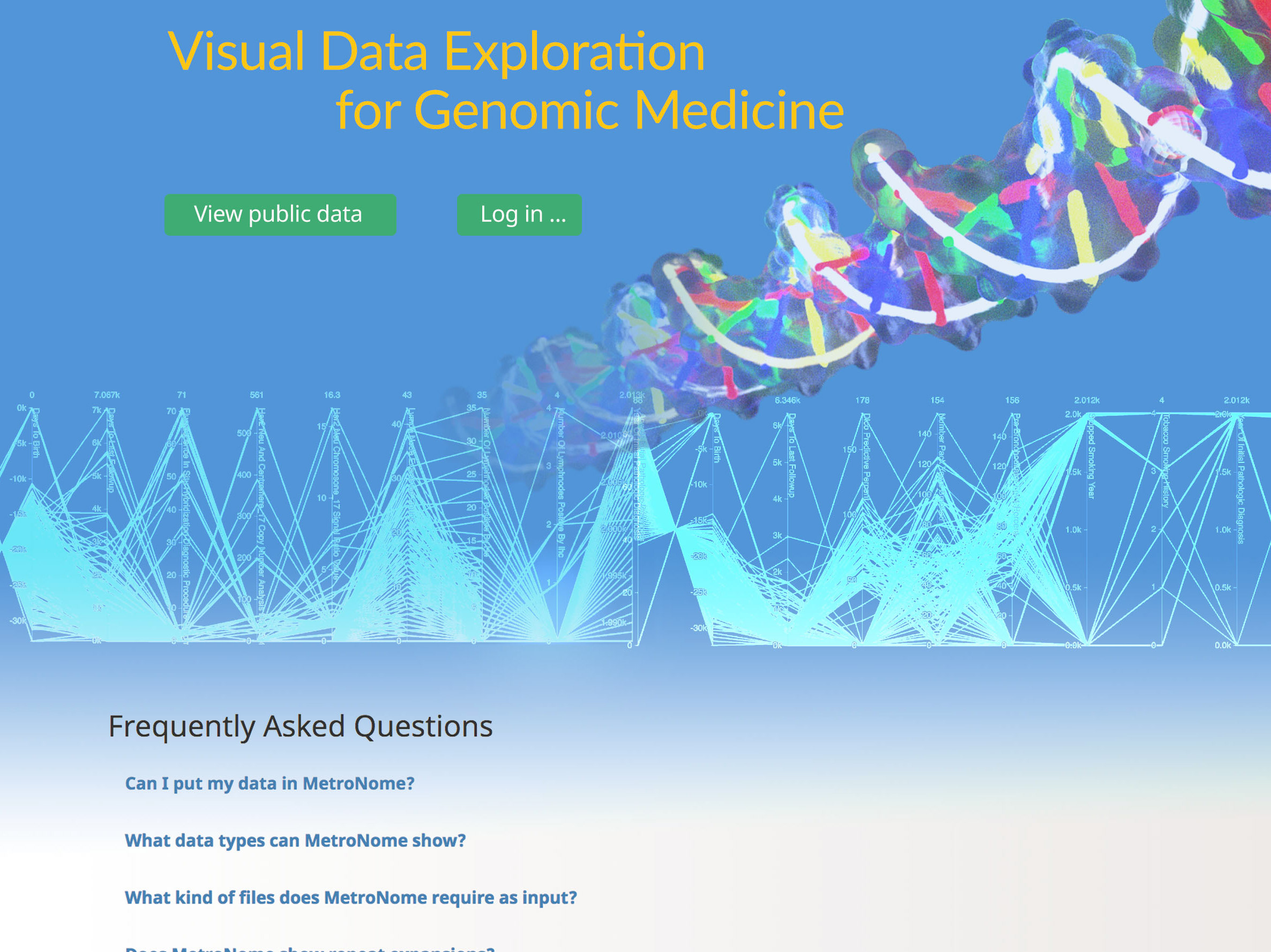For the caregiver, the process is broken down into three simple steps for each patient.
Whole genome sequencing can help properly diagnose more patients, by revealing causal genotypes even in the non-protein-coding majority of our DNA. Genetic testing remains, however, a one-way street, where physicians order tests based on initial workup, and labs interpret data in that limited light, often with no reportable finding or insight into why the case was negative.
To help find causal genotypes more often, we built a portal, GenomeDiver, to leverage the expertise of physicians and labs by breaking down the barriers created by the traditional workflow.
Instead of confronting physicians with genetic details, the software finds associated traits and symptoms and then asks caregivers to screen those phenotypic terms and flag potentially causative diseases. The ranked results are then returned to the lab to refine interpretation.
Developed for the NYCKidSeq project, GenomeDiver guides clinicians through genomic findings using standard public data sources such as OMIM, to help prioritize leads by means of a dialogue with the testing lab that should boost both near and long-term diagnostic yields.
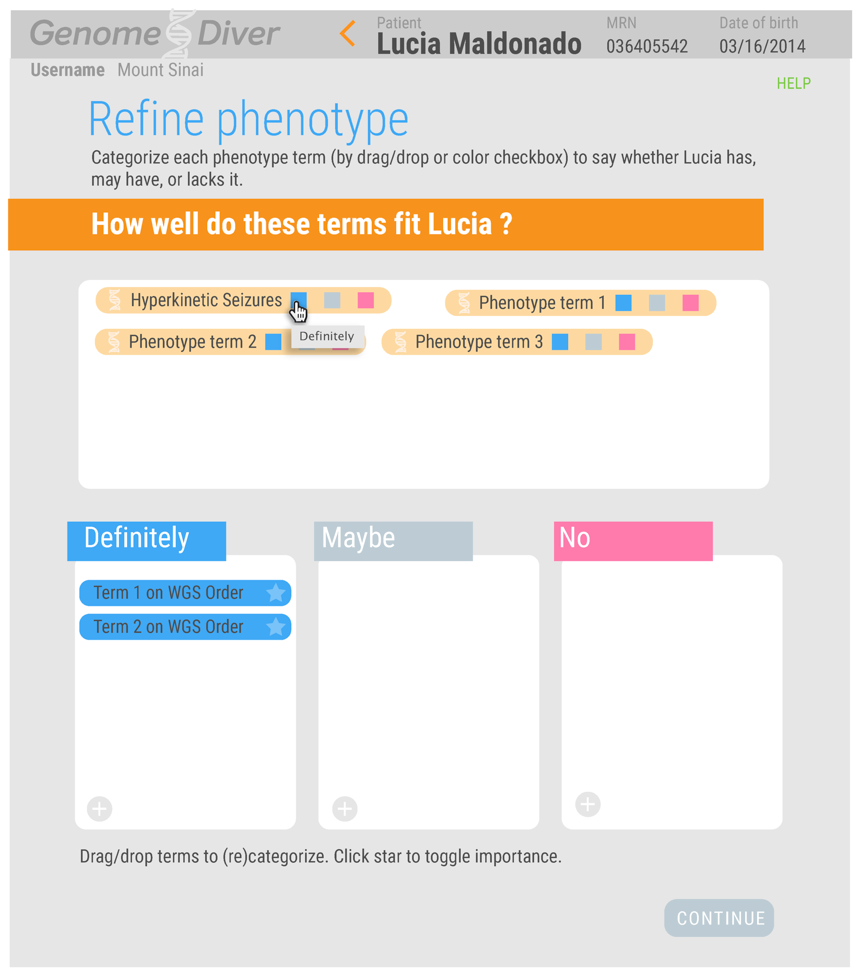
Instead of looking at genetic variants, the physician categorizes traits and symptoms.
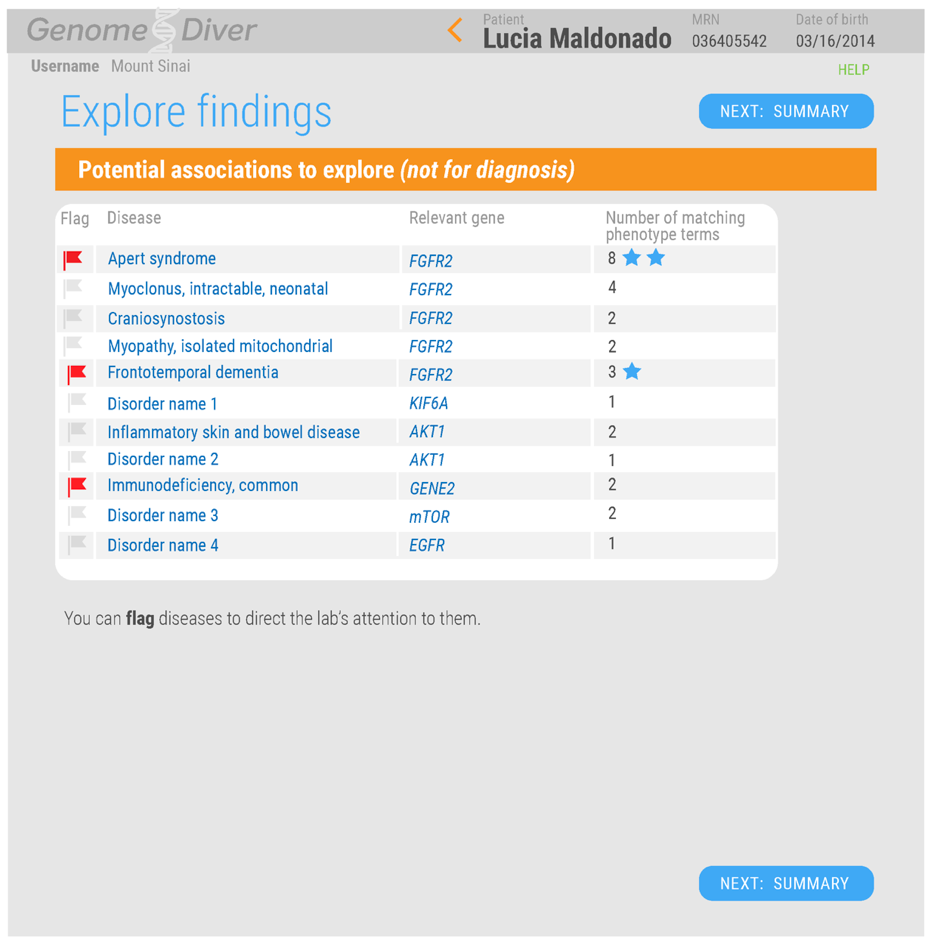
The resulting findings can be flagged by the physician.
